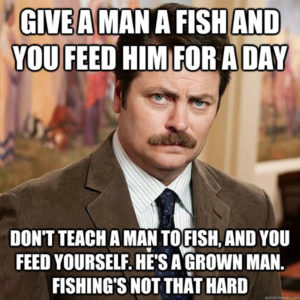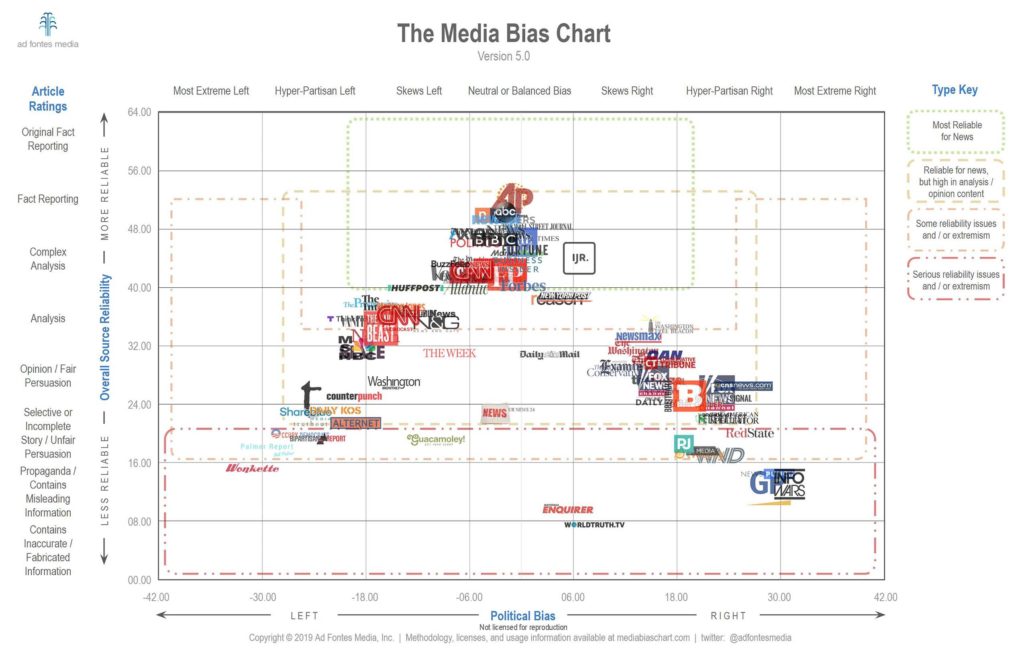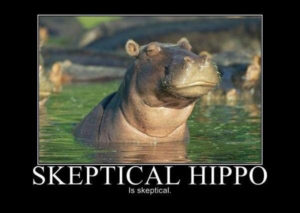UPDATE: check out these awesome media literacy resources pulled together by the Illinois Civics Hub! Also, check out this amazing website that provides lots of articles debunking pseudoscience and false information.
Misinformation is not new. Deception, whether intentional or unintentional is not even unique to humans (see, for example, Nature’s Cheats).

However, the landscape of how we create, curate, and disseminate information has drastically changed in the past few decades. Highly accessible internet access, engaging social media platforms, and few-to-no checks on information accuracy have not only increased the amount of misinformation, but have also substantially increased the speed and distance with which misinformation can spread.
The vast amount of information at our fingertips is an incredibly powerful tool, but can also be an incredibly powerful weapon. In the age of COVID-19, we have seen how dangerous misinformation can be (for example, the promotion of hydroxychloroquine despite the lack of evidence), which can lead to real harm (see here and the results of a recent study here).
 During crises, people are desperate for information, and this frenzied desire to know more leaves us more open to encountering and accepting misinformation as true (see, for example, COVID-19 Brings a Pandemic of Conspiracy Theories)
During crises, people are desperate for information, and this frenzied desire to know more leaves us more open to encountering and accepting misinformation as true (see, for example, COVID-19 Brings a Pandemic of Conspiracy Theories)
Because of the amount and real threat of COVID-19 misinformation, there has been a vocal call for scientists to callout and correct pseudoscience and conspiracy theories (see for example, Pseudoscience and COVID-19 – we’ve had enough already).
Yes, we need to address the problematic claims. However, I think this only addresses the proximate and not the ultimate issue, which is that many, if not most, people struggle to reliably spot misinformation. There needs to be a more concerted effort to train people (friends, family, students) to be more discerning consumers of information.
There will always be people who want to intentionally spread false information, however, if we give people the tools to identify misinformation, we can limit that spread. Correcting misinformation is like giving a person a fish…they will correct, hopefully, that one falsehood. However, teaching someone to identify false claims will empower them to spot misinformation for life.

Throughout my career, I have placed greater and greater emphasis on teaching my students to always be skeptical, recognize bias (their own and that of others), assess the agenda of article authors, and to confirm or refute purported facts with additional research. And, semester after semester, it is these lessons that students point to as being the most important and most remembered.
These are not skills anyone is born with; they need to be practiced over and over. Here are some tips and questions you can use to identify misinformation. You can also consult the comprehensive CARS (Credibility, Accuracy, Reasonableness, Support) Checklist.
-
-
- Always be skeptical! Question everything…always!
- Come into all articles with the mindset that the author has to provide some damn good evidence to convince you of their argument, and even when that evidence is presented…question and research it.
- Always be skeptical! Question everything…always!
-
-
-
- Consider the source of the information
- What media outlet is reporting it? Where does it fall on this fantastic media bias chart (or see small image below)?
- How might the agenda of the media outlet bias the information in the article?
- Consider the source of the information
-

-
-
- What is the date of publication?
- The COVID-19 pandemic is a rapidly evolving situation where new information becomes available almost every hour – often rendering yesterday’s news completely out of date.
- If the article is more than a couple weeks old, do a search to see if there is new, updated information.
- What is the date of publication?
-
-
-
- Who is the author?
- Give the author a quick search to find out their background and credentials – especially those that relate to the claims they are making.
- Might they have an agenda? If so, what is that agenda? What are they trying to make you think, feel, and do?
- Who is the author?
-
-
-
- How is the information being presented?
- How was the evidence gathered? Were links provided to original work?
- Does the original work back up the author’s claim?
- If only screen shots or simplified summaries of the original work are presented without links, BE EVEN MORE SKEPTICAL. The author is only showing you what the author wants you to see and not the whole story, and you will need to research more on your own.
- If you do not have access to the original work, email the author! Scientists love sharing their articles to those who don’t have access. I mean it, we really do.
- How is the information being presented?
-

-
-
- Does what you are reading confirm what you already believe?
- If yes, BE CAREFUL. This could be confirmation bias, which is the tendency to only seek out and trust information you already agree with in order to confirm the beliefs you hold.
- Here is some more information about confirmation bias.
- Another term for this is apophenia – the tendency to make connections or see patterns between unrelated and random things. This is often how conspiracy theories are generated and spread. This article does a great (albeit long) job of discussing this.
- This doesn’t necessarily mean you are wrong in your thinking, but it does mean you need to do some extra research to determine if this is confirmation bias or not. Read articles (from quality sources, see media bias chart above) that promote opposing views. Once you have heard both sides of a story, try to objectively weigh the evidence and decide where your thoughts fall with this new information.
- Does what you are reading confirm what you already believe?
-
-
-
- Does what you are reading elicit an emotional response?
- If yes, BE EXTRA SKEPTICAL! The author of the article is likely trying to use emotion (and not well researched information) to sway your opinion.
- The same advice applies here as it did above. If you find yourself reacting emotionally to something (especially if it is anger or fear), do additional research from quality sources to determine if the original post is misleading you.
- Does what you are reading elicit an emotional response?
-

-
- Check out the website “About” and “Contact” pages
1. Do they have a list of reporters? If not, be VERY skeptical!
2. Is the “About” page comprehensive and give you a good idea of who they are and what their goals are (see #2,4,&5 above)? If not, be VERY skeptical!
- Check out the website “About” and “Contact” pages
- 9. Reach out to others!
- 1. Still don’t know if what you are reading is true? Start conversations with friends and family who may have more expertise in a particular subject. Make sure you and they are asking questions.
- 2. Seeks expert opinions, and get more than one if you can.
- 10. Be wary of video clip times! If you see a video clip that is only 5-10 seconds long or less DON’T BELIEVE IT! That clip was taken out of context! Do some searching to find a more complete video, and then make a judgement about the original shortened video’s goal and potential manipulation.
